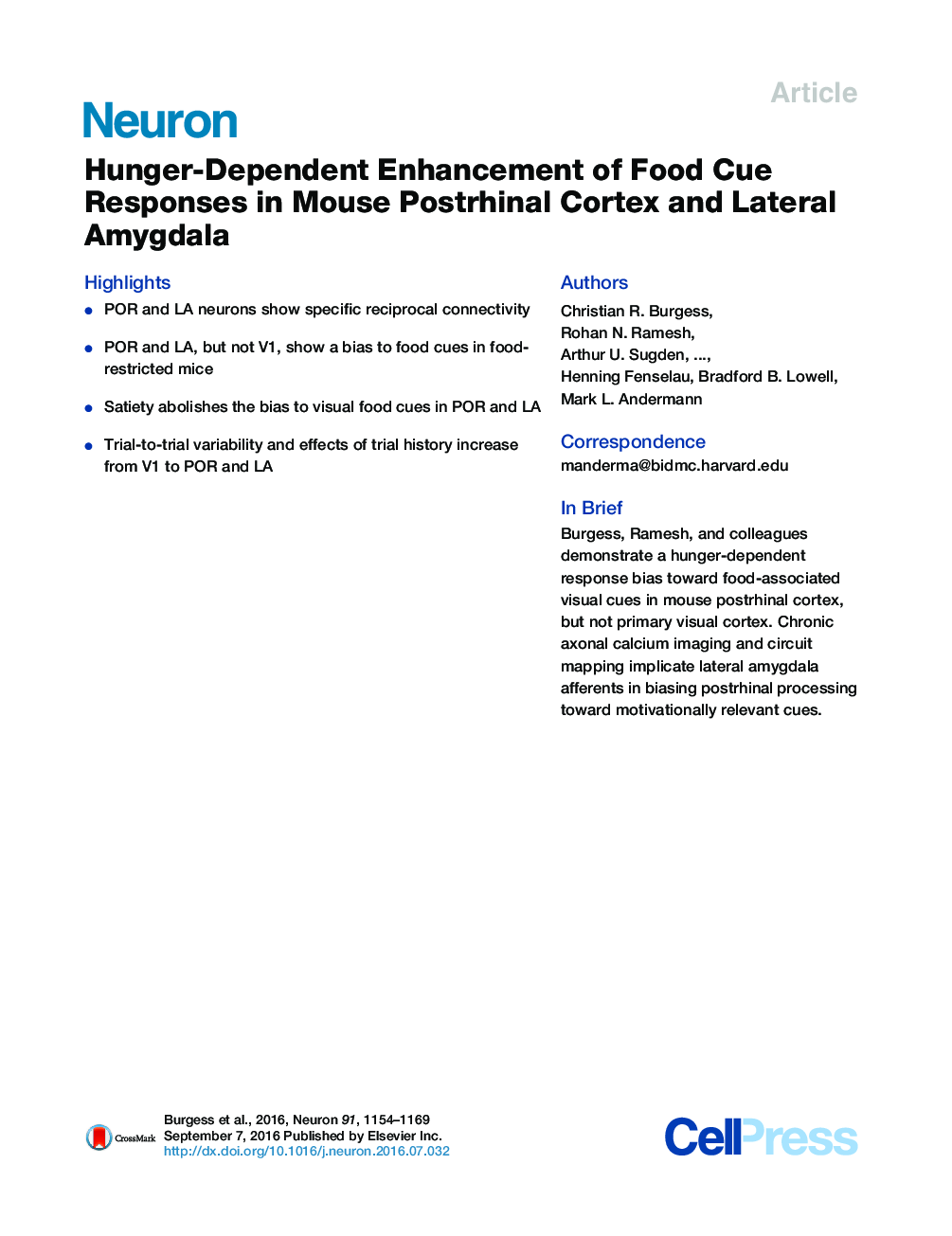| کد مقاله | کد نشریه | سال انتشار | مقاله انگلیسی | نسخه تمام متن |
|---|---|---|---|---|
| 4320617 | 1291516 | 2016 | 16 صفحه PDF | دانلود رایگان |
• POR and LA neurons show specific reciprocal connectivity
• POR and LA, but not V1, show a bias to food cues in food-restricted mice
• Satiety abolishes the bias to visual food cues in POR and LA
• Trial-to-trial variability and effects of trial history increase from V1 to POR and LA
SummaryThe needs of the body can direct behavioral and neural processing toward motivationally relevant sensory cues. For example, human imaging studies have consistently found specific cortical areas with biased responses to food-associated visual cues in hungry subjects, but not in sated subjects. To obtain a cellular-level understanding of these hunger-dependent cortical response biases, we performed chronic two-photon calcium imaging in postrhinal association cortex (POR) and primary visual cortex (V1) of behaving mice. As in humans, neurons in mouse POR, but not V1, exhibited biases toward food-associated cues that were abolished by satiety. This emergent bias was mirrored by the innervation pattern of amygdalo-cortical feedback axons. Strikingly, these axons exhibited even stronger food cue biases and sensitivity to hunger state and trial history. These findings highlight a direct pathway by which the lateral amygdala may contribute to state-dependent cortical processing of motivationally relevant sensory cues.
Journal: - Volume 91, Issue 5, 7 September 2016, Pages 1154–1169
